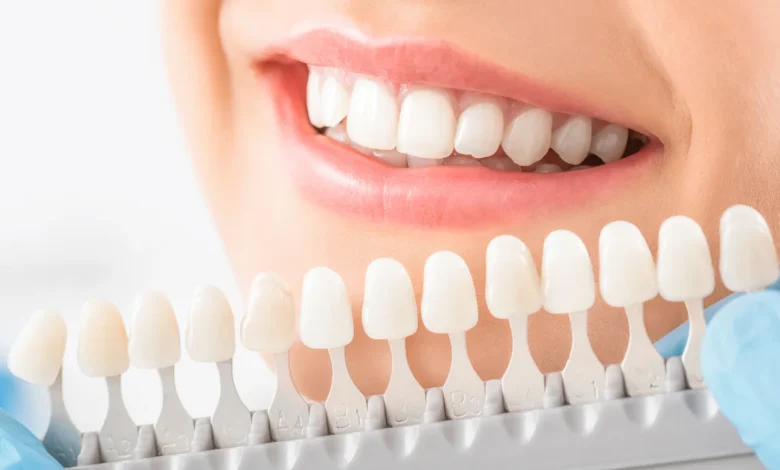Cosmetic Dentistry for Sensitive Teeth: Can You Still Achieve a Beautiful Smile?

Having sensitive teeth doesn’t mean you have to give up on your dream smile. Many people with tooth sensitivity worry that cosmetic dental procedures will worsen their discomfort or that they’re not candidates for treatments like veneers, whitening, or dental implants. The good news is that modern cosmetic dentistry offers numerous solutions specifically designed for sensitive teeth, and experienced dentists can help you achieve beautiful results while managing your sensitivity.
Tooth sensitivity affects millions of people worldwide, causing sharp, temporary pain when teeth are exposed to hot, cold, sweet, or acidic stimuli. This condition occurs when the protective enamel layer wears down or when gums recede, exposing the underlying dentin layer. While sensitivity can present challenges during cosmetic treatments, it shouldn’t prevent you from pursuing the smile you’ve always wanted.
This comprehensive guide explores how cosmetic dentistry can work for people with sensitive teeth, the best procedures for sensitive patients, and practical strategies for managing discomfort during and after treatment.
Understanding Tooth Sensitivity and Its Impact
Tooth sensitivity develops when microscopic tubules in the dentin become exposed. These tubules contain nerve endings that react to temperature changes, pressure, and certain substances. Common causes include enamel erosion from acidic foods and drinks, aggressive brushing, teeth grinding, gum recession, and certain dental procedures.
The severity of sensitivity varies significantly between individuals. Some people experience mild discomfort when drinking cold beverages, while others have severe pain that affects their daily activities. Understanding your specific type and level of sensitivity is crucial for determining the best cosmetic treatment approach.
Many people with sensitive teeth avoid dental treatments altogether, fearing increased pain or complications. However, delaying cosmetic procedures can sometimes worsen sensitivity issues. For example, worn enamel that causes sensitivity may continue to deteriorate without proper treatment, leading to more significant problems over time.
Pre-Treatment Strategies for Sensitive Teeth
Before beginning any cosmetic dental work, your dentist should conduct a thorough evaluation of your sensitivity. This assessment helps identify the underlying causes and severity of your condition, allowing for a customized treatment plan that minimizes discomfort.
Desensitizing treatments are often recommended before cosmetic procedures. These may include professional fluoride applications, desensitizing toothpaste containing potassium nitrate or stannous fluoride, or in-office treatments that seal exposed tubules. Starting these treatments several weeks before your cosmetic work can significantly reduce sensitivity during procedures.
Your dentist may also recommend specific pre-treatment protocols, such as avoiding certain foods and beverages, using prescription-strength desensitizing products, or taking anti-inflammatory medications. These preparatory steps create optimal conditions for successful cosmetic treatment while minimizing discomfort.
Communication with your dental team is essential throughout this process. Be honest about your sensitivity levels, previous experiences with dental work, and any concerns you may have. This information helps your dentist tailor the treatment approach to your specific needs.
Teeth Whitening Options for Sensitive Teeth
Professional teeth whitening remains one of the most popular cosmetic dental treatments, but it can be particularly challenging for people with sensitive teeth. The bleaching agents used in whitening treatments can temporarily increase sensitivity, but several strategies can help manage this issue.
Gradual whitening approaches work exceptionally well for sensitive teeth. Instead of aggressive in-office treatments that achieve dramatic results in a single session, your dentist may recommend a slower approach using lower-concentration bleaching agents over an extended period. This method allows your teeth to adjust gradually while still achieving significant whitening results.
Custom-fitted whitening trays provide better control over the whitening process than over-the-counter options. Your dentist can adjust the concentration of whitening gel and recommend treatment schedules that minimize sensitivity while maximizing results. Many patients find that using whitening gel for shorter periods more frequently produces better outcomes than extended single treatments.
Desensitizing agents can be incorporated into your whitening routine. Some professional whitening systems include potassium nitrate or fluoride to help reduce sensitivity during treatment. Your dentist may also recommend using desensitizing toothpaste for several weeks before and after whitening treatments.
Alternative whitening methods may be more suitable for extremely sensitive teeth. These include whitening toothpastes with lower concentrations of active ingredients, oil pulling with coconut oil, or professional treatments that use laser technology to activate whitening agents more efficiently, reducing the time your teeth are exposed to bleaching chemicals.
Porcelain Veneers and Crowns for Sensitive Teeth
Porcelain veneers and crowns can actually help reduce tooth sensitivity while dramatically improving your smile’s appearance. These restorations cover the exposed dentin that causes sensitivity, providing a protective barrier that can eliminate or significantly reduce discomfort.
The preparation process for veneers and crowns does require removing some tooth structure, which can temporarily increase sensitivity. However, experienced cosmetic dentists use techniques to minimize this discomfort, including proper anesthesia, gentle preparation methods, and immediate placement of temporary restorations to protect prepared teeth.
Proper bonding techniques are crucial for sensitive teeth. Your dentist will use desensitizing agents on prepared teeth before placing the final restorations, creating a seal that prevents sensitivity while ensuring strong adhesion. The bonding process itself may involve light-curing systems that generate heat, but modern techniques minimize this discomfort.
High-quality porcelain materials offer superior results for sensitive teeth. Premium porcelain veneers and crowns provide better insulation against temperature changes compared to other materials, reducing the likelihood of post-treatment sensitivity. They also resist staining and maintain their appearance longer than alternative options.
Post-treatment care is essential for managing sensitivity after veneer or crown placement. Your dentist will provide specific instructions for cleaning and maintaining your new restorations, including recommendations for desensitizing toothpaste and proper brushing techniques.
Dental Implants and Sensitive Teeth
Missing teeth can contribute to sensitivity in adjacent teeth, making dental implants an excellent solution for people with sensitive teeth. Implants restore proper bite alignment and prevent the shifting that can worsen sensitivity issues.
The implant placement process involves surgery, but modern techniques minimize discomfort during and after the procedure. Your oral surgeon will use appropriate anesthesia and may recommend sedation options for anxious patients. The titanium implant post doesn’t typically cause sensitivity issues once it integrates with the jawbone.
Bone grafting procedures may be necessary for some implant patients, particularly those with sensitivity caused by bone loss. While this adds complexity to the treatment, it often improves overall oral health and reduces sensitivity in the long term.
Implant-supported crowns provide excellent results for people with sensitive teeth. The crown portion of the implant can be designed to protect adjacent sensitive teeth while restoring function and appearance. Your dentist can customize the crown’s shape and size to optimize comfort and aesthetics.
Orthodontic Treatments for Sensitive Teeth
Crooked or misaligned teeth can contribute to sensitivity by creating areas that are difficult to clean properly, leading to enamel erosion and gum recession. Orthodontic treatment can address these issues while improving your smile’s appearance.
Traditional braces may initially increase sensitivity as teeth begin to move, but this discomfort is typically temporary. Your orthodontist can recommend pain management strategies, including over-the-counter pain relievers, orthodontic wax to protect sensitive areas, and modified oral hygiene routines.
Clear aligners like Invisalign often cause less sensitivity than traditional braces because they apply gentler, more controlled forces to move teeth. The removable nature of aligners also allows for easier cleaning and the temporary removal of the appliance if sensitivity becomes uncomfortable.
Accelerated orthodontic options may be suitable for some patients with sensitive teeth. These techniques use various methods to speed tooth movement, reducing the overall treatment time and minimizing the period of discomfort.
Advanced Techniques for Managing Sensitivity
Modern cosmetic dentistry offers numerous advanced techniques specifically designed for patients with sensitive teeth. Laser therapy can be used to seal exposed tubules and reduce sensitivity before and after cosmetic procedures. This painless treatment often provides immediate relief and can be repeated as needed.
Sedation options make cosmetic procedures more comfortable for patients with sensitive teeth. Nitrous oxide (laughing gas) provides mild relaxation and pain relief, while oral sedation or IV sedation can be used for more extensive procedures. These options allow patients to receive comprehensive cosmetic treatment without experiencing significant discomfort.
Biomimetic dentistry focuses on preserving as much natural tooth structure as possible while achieving cosmetic goals. This approach often results in less sensitivity because it minimizes the removal of healthy tooth structure and uses materials that closely mimic natural teeth.
Digital imaging and computer-aided design allow for more precise treatment planning, reducing the likelihood of complications that could increase sensitivity. These technologies enable your dentist to create restorations that fit perfectly and provide optimal comfort.
Maintaining Your Results with Sensitive Teeth
Once you’ve achieved your desired cosmetic results, proper maintenance is crucial for preserving both the appearance and comfort of your new smile. People with sensitive teeth need to be particularly careful about their oral hygiene routine to prevent sensitivity from returning.
Use a soft-bristled toothbrush and gentle brushing technique to avoid damaging your restorations or irritating sensitive areas. Electric toothbrushes with pressure sensors can help ensure you’re not brushing too aggressively.
Desensitizing toothpaste should become a regular part of your oral care routine. These products contain ingredients that help block pain signals from reaching the tooth’s nerve, providing ongoing protection against sensitivity.
Avoid acidic foods and beverages that can erode enamel and worsen sensitivity. If you do consume acidic items, rinse with water afterward and wait at least 30 minutes before brushing to allow your saliva to neutralize the acids.
Regular dental checkups are essential for maintaining your cosmetic work and monitoring any changes in sensitivity. Your dentist can identify potential issues early and recommend appropriate treatments to prevent problems from worsening.
Working with Your Dental Team
Successful cosmetic treatment for sensitive teeth requires excellent communication with your dental team. Be specific about your sensitivity symptoms, including when they occur, their severity, and any triggers you’ve identified.
Choose a dentist with experience treating sensitive teeth and performing cosmetic procedures. Look for practitioners who offer multiple sedation options, use advanced materials and techniques, and have a track record of successful outcomes with sensitive patients.
Don’t hesitate to ask questions about your treatment plan, expected discomfort levels, and post-treatment care. Understanding what to expect can help reduce anxiety and ensure you’re prepared for each step of the process.
Consider seeking a second opinion if you’re told that your sensitivity makes you a poor candidate for cosmetic treatment. Many dental issues that seem insurmountable to one practitioner may be easily managed by another with different expertise or techniques.
Achieving Your Dream Smile Despite Sensitivity
Having sensitive teeth doesn’t mean you have to settle for an imperfect smile. With proper planning, appropriate techniques, and experienced dental care, you can achieve excellent cosmetic results while managing your sensitivity effectively.
The key to success lies in working with a qualified cosmetic dentist who understands the unique challenges of treating sensitive teeth. By taking a conservative, patient-centered approach and using advanced materials and techniques, you can transform.




